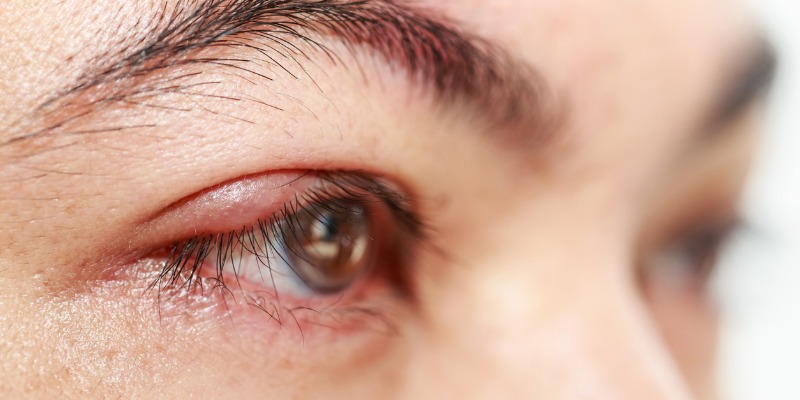Is something wrong with your eyelids?
Perhaps they are swollen or red, or feel sore, itchy, or flushed. If you are experiencing these symptoms, then you may have a condition called blepharitis, which is an inflammation of the eyelid.
Often, blepharitis is caused by an infection of some sort- a colony of microscopic organisms that infiltrate your body. Let’s discuss some of these pathogens and what can be done to deal with them.
Types of Infections Related to Blepharitis
There are several types of infectious pathogens that can cause disease in your eyes and eyelids.
The most common type of infection related to ocular disorders is bacterial. Predominant blepharitis-causing bacteria species include Staphylococcus (also a frequent source of food poisoning), Streptococcus (which can cause strep throat and pink eye), and Pseudomonas (a common cause of infections in hospitals). Harmful bacteria steal nutrients like sugar and iron from your body and excrete damaging waste products.1
Recently, the medical community has discovered that blepharitis is also frequently caused by demodicosis – an infestation of Demodex mites.2
These mites, microscopic creatures related to spiders, are also called “eyelash mites.” As this name suggests, they spend most of their lives deep inside eyelash follicles and sebaceous (oil) glands.
They eat oil and skin cells and only come onto the surface of your skin at night. Most people have Demodex mites in their facial skin, but they usually go unnoticed. Sometimes, however, they can become overpopulated and start causing problems like dermatitis, flaking skin or dandruff, acne, or blepharitis.3,4
Inflammation and Your Immune System
When your immune system recognizes an invading pathogen, it mounts an immune response to try to get rid of it.
In the case of blepharitis, your immune system may be reacting to an invading bacteria, to damage caused by Demodex mites, or to waste products from these invaders.2 Blood vessels around the infected site dilate to let more white blood cells into the area, leading to the swelling, redness, and warmth associated with inflammation.5
Managing Blepharitis
Unfortunately, without undergoing some clinical tests, it is hard to know what kind of infection is causing your case of blepharitis. So, with so many different possible causes of blepharitis, how can you know how to treat it? The answer is to use a product that targets all of the potential causes.
Researchers identified one particular molecule, 4-terpineol, as being a very important ingredient in tea tree oil.6
Cliradex Light foaming cleanser and Cliradex towelettes have been specially formulated with 4-terpineol, but without any extra ingredients from tea tree oil.
These natural, plant-based cleansers are shown to eliminate Demodex mites, yet are gentle. They can help you clear the cause of your blepharitis and promote lower levels of inflammation, without any irritating side effects.
Bacteria, bugs, or anything else…whatever is causing your blepharitis, we’ve got you covered.
References:
1. Teweldemedhin M, Gebreyesus H, Atsbaha AH, Asgedom SW, Saravanan M. Bacterial profile of ocular infections: a systematic review. BMC ophthalmology. 2017;17(1):212.
2. Kosik-Bogacka DI, Lanocha N, Lanocha A, Czepita D, Grobelny A, Zdziarska B, Kalisinska E. Role of Demodex folliculorum in the pathogenesis of blepharitis. Acta Ophthalmologica. 2012;90(7):e579.
3. Cheng AM, Sheha H, Tseng SC. Recent advances on ocular Demodex infestation. Current opinion in ophthalmology. 2015;26(4):295-300.
4. Roihu T, Kariniemi AL. Demodex mites in acne rosacea. Journal of cutaneous pathology. 1998;25(10):550-552.
5. Eberhardt M, Rammohan G. Blepharitis. In: StatPearls. Treasure Island (FL): StatPearls Publishing LLC.; 2017.
6. Tighe S, Gao YY, Tseng SC. Terpinen-4-ol is the Most Active Ingredient of Tea Tree Oil to Kill Demodex Mites. Translational vision science & technology. 2013;2(7):2.





